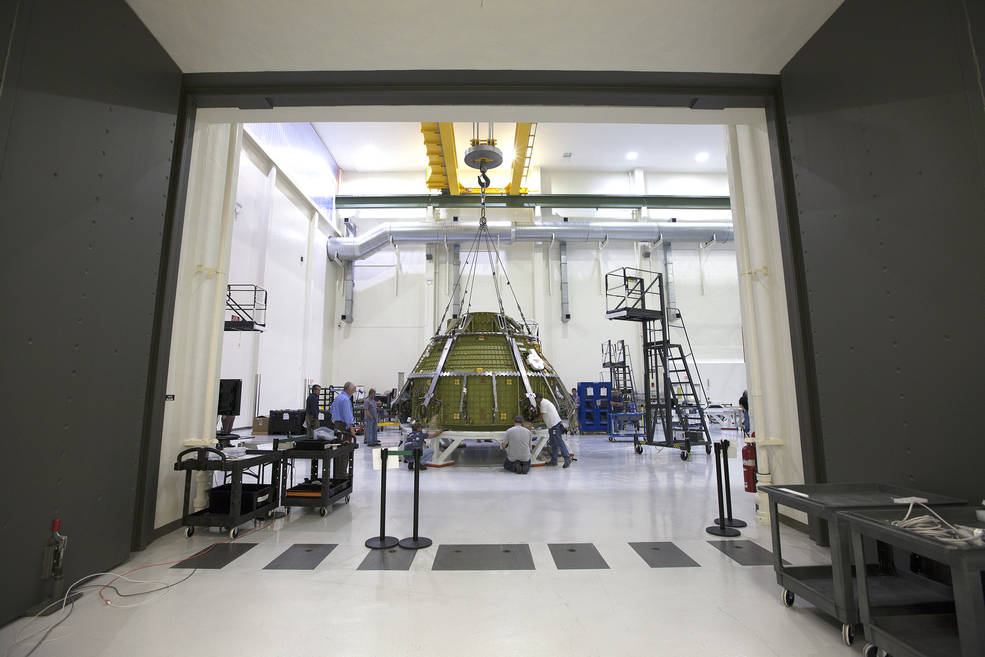Passing tests isn’t just exciting for students – it’s exciting for spacecraft!
Especially for one that will take humans deep into space.
Having just successfully completed pressure tests on its primary structure, NASA’s Orion crew capsule is one step closer to its first exploration mission.
The spacecraft has an underlying structure called the pressure vessel. The tests that it just passed confirmed that the weld points of this structure will contain and protect astronauts during all of the different phases of the first exploration mission, including launch, in-space, re-entry and landing.
The pressure vessel contains the atmosphere essential for a crew on future manned missions. This critical part of the spacecraft will also provide the crew’s living and working spaces.
Want to learn more about the pressure vessel? (Hint – the welding is really cool.) Click here!
Technicians prepared for this test by attaching hundreds of strain gauges on the vehicle’s interior and exterior surfaces. The gauges provided real-time data to analysts who were monitoring the changes during the pressure tests.
Lockheed Martin is the prime contractor for Orion and also a founding member of the Coalition. They performed the successful pressure tests over two days while the pressure was increased incrementally.
What’s next for Orion? Tubing will be attached for important systems, followed by more testing, including a launch simulation, power on, and tests of acoustics and vibrations.
Orion’s first mission, known as Exploration Mission-1 (EM-1), will take the unmanned spacecraft on a trip past the moon and return it safely to Earth.
With the positive outcome of this pressure test, Orion is one step closer on our journey to deep space.
Check out NASA.gov for an overview of the Orion spacecraft.


